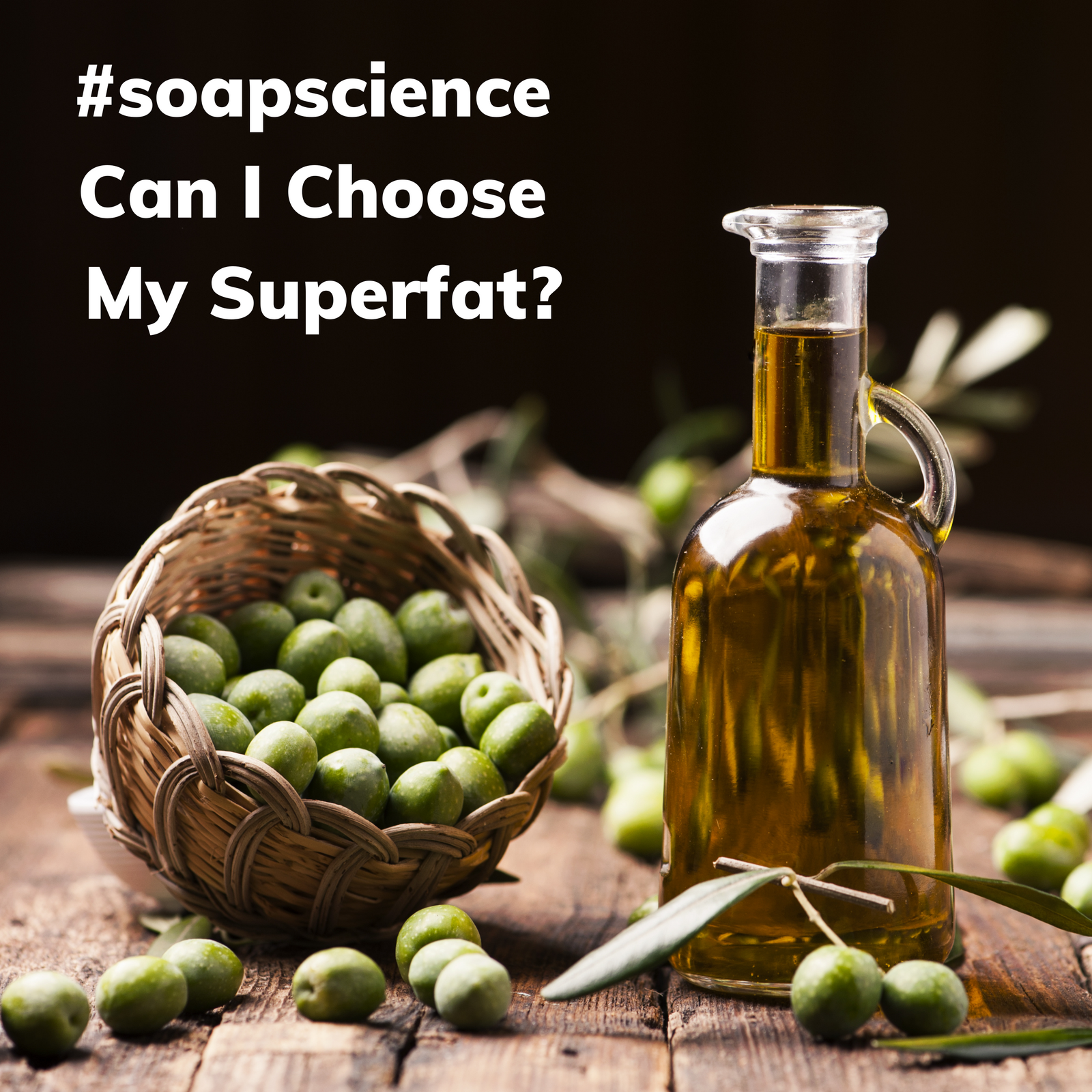Can I Choose My Super Fat in Soap Making?

Can I Choose My Super Fat in Soap Making?
In a nutshell, with cold processed soap, no.
Your cold processed soap chooses its own at super fat and there is very little you can do about that. Generally it will, in the main, be the slowest saponifying oils which are your liquid oils. I have read that you can influence your chosen superfat by adding it at trace and before you pour soap batter in to the mould but this does not appear to be the case. It has been tested in quite some depth and evidenced by Kevin Dunn in his publication.
Dunn, K.M. (2010). Scientific soapmaking : the chemistry of the cold process. Farmville, Va: Clavicula Press.
This makes sense as the saponification process takes place over around 48 hours, so adding a super fat as soon as you have mixed your oils and lye to emulsification and prior to putting it in your mould will never influence the end result, at least not to any significant degree.
Hot process soap making however is a completely different beast. You can have complete control over your super fat simply by adding it after the cook. The students in my hands on soap making classes often have difficulty getting their head around this which I completely understand as they are generally learning everything from scratch on the space of just one day but this is the simple explanation.
When hot processing soap you are adding your butters, oils and lye solution to the slow cooker, mixing it to trace and then cooking it to force it through saponification. This usually takes around 30 minutes and it means that by the time you put your soap in the mould the chemical reaction has completed and you already have a basic soap with no sodium hydroxide left.
This means if you make your hot process soap with a 0% superfat in the first instance, wait until that stage has completed and then add your chosen superfat , you know that there is no sodium hydroxide left as it has all been used up during the cook and whatever else you add will remain in the soap bar in it's original form.

Why would I want to choose my superfat?
Not all butters and oils are equal. Some are more expensive than others, some are more luxurious or suited to different skin types than others. A great example is rosehip oil. Packed with vitamin A and with properties that are extremely beneficial to more mature skins, this is a lovely oil to have in a facial soap, for example. But it is expensive and using a lot of it in soap is not realistic. But by adding it as our superfat AFTER the cook, we know that we are getting the full benefit of that particular oil on our skin in it's pure form.
I hope you found that helpful.
I have never read it explained so clearly and it totally makes sense to me now. Knowing this now makes me want to make Hot Process 😊. I need that extra conditioning since my skin is so dry. Thanks so much for you providing this information.
Leave a comment